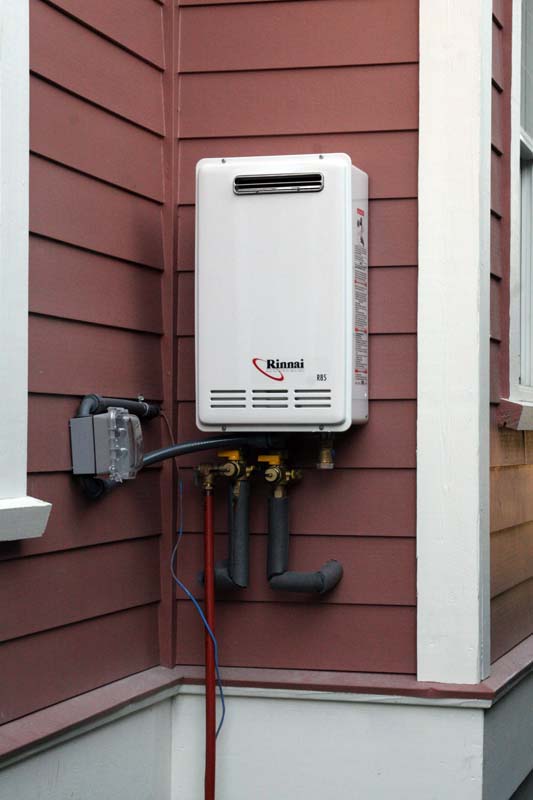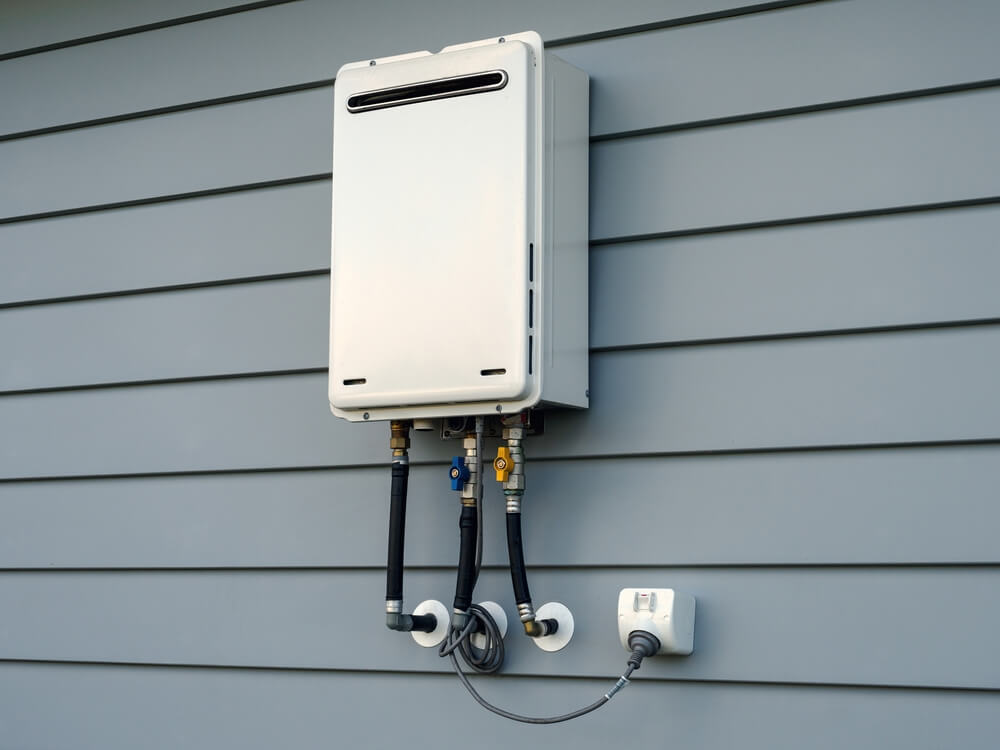No, an outdoor tankless water heater cannot be installed indoors. These units are specifically designed for outdoor use due to ventilation and safety requirements.
Outdoor tankless water heaters are popular for their energy efficiency and space-saving benefits. They heat water on demand, providing an endless supply while minimizing energy waste. Designed to withstand outdoor conditions, these units are equipped with protective features against weather elements.
Installing them indoors can lead to safety hazards, including improper ventilation and potential gas buildup. Proper placement ensures optimal performance and longevity. Homeowners seeking efficient water heating should consider these factors when choosing a suitable system for their needs. Understanding the differences between indoor and outdoor units is crucial for making informed decisions.

Credit: www.myfloridahomeenergy.com
Page Contents
Introduction To Tankless Water Heaters
Tankless water heaters provide endless hot water. They heat water on demand. This means no more running out of hot water during showers.
Benefits of going tankless include saving space and energy. These units are compact and can fit in small areas. They also use less energy than traditional heaters.
Indoor models are designed for enclosed spaces. They need proper ventilation to avoid gas build-up. Outdoor models are built to withstand weather conditions. They do not require additional venting.
| Feature | Indoor Models | Outdoor Models |
|---|---|---|
| Space Requirement | Compact, needs ventilation | Weather-resistant, no venting |
| Installation | More complex | Usually simpler |
| Cost | Higher due to venting | Generally lower |
Key Considerations For Installation
Installing an outdoor tankless water heater indoors requires specific space considerations. Ensure adequate room for the unit and maintenance access. The minimum clearance around the heater is crucial for proper airflow.
Ventilation is another key factor. Indoor units need proper venting systems to expel exhaust gases safely. Check local codes for ventilation requirements. Proper installation prevents dangerous gas buildup. Always consult a professional for the best results.
The Indoor Environment Challenge
Installing an outdoor tankless water heater indoors poses serious challenges. Air quality can be affected by exhaust fumes. Proper ventilation is crucial for safety. Without it, harmful gases can build up.
Temperature regulation is another concern. Indoor heaters can struggle with heat dissipation. This may lead to overheating or malfunction. An outdoor model is not designed for enclosed spaces.
Choosing the right location is essential. An indoor installation can lead to wasted energy. The heater may also need extra insulation to function well.
Safety Protocols For Indoor Installation
Installing an outdoor tankless water heater indoors can pose serious safety risks. One major concern is carbon monoxide. This gas can build up in poorly ventilated spaces. It is colorless and odorless, making it very dangerous.
Always ensure proper ventilation when installing indoors. Carbon monoxide detectors should be used in the area. Check local building codes for compliance. These codes help ensure safety in installations.
Follow all recommended manufacturer guidelines. This can prevent potential hazards. Regular maintenance is also crucial. Keeping the unit clean promotes safe operation.
Technical Aspects Of Conversion
Altering venting systems is crucial for indoor installation. Outdoor tankless water heaters use different venting than indoor models. Proper venting prevents harmful gases from entering your home.
Using direct vent systems can improve safety. These systems draw air from outside and vent exhaust back outside. This method keeps indoor air clean and safe.
Adapting to indoor plumbing also requires careful planning. Water supply lines must connect properly to avoid leaks. Check for adequate water pressure to support the heater’s operation.
Ensure the location of the heater allows for easy access. Regular maintenance is important for long-term performance. A qualified technician can help with the installation process.
Pros And Cons Of Indoor Installation
Indoor installation of an outdoor tankless water heater offers great convenience. It allows easy access for operation and adjustments. Many prefer this setup for better control over temperature.
Yet, indoor installation has some drawbacks. Proper ventilation is essential to avoid gas buildup. Maintenance can be challenging in tight spaces. Regular service checks become harder without enough room.
| Pros | Cons |
|---|---|
| Convenient access | Requires proper ventilation |
| Better temperature control | Maintenance can be difficult |
| Protection from weather | Increased risk of damage |
Real-life Case Studies
Many homeowners have successfully installed outdoor tankless water heaters indoors. One case involved a family in a small home. They wanted instant hot water without taking up much space. The installation was done in a laundry room. Proper ventilation ensured safety and efficiency.
Another example is a cabin in a remote location. The owner faced cold winter temperatures. An indoor installation provided easy access to hot water. Insulation around pipes helped maintain temperature and prevent freezing.
Common challenges include ventilation issues and space constraints. Solutions involve using direct vent systems or installing multiple units. Proper planning ensures that these units function safely indoors.

Credit: apollohome.com
Expert Tips For A Smooth Transition
Choosing the right model is crucial for an indoor installation. Not all outdoor models work indoors. Consider size, capacity, and energy efficiency. Look for units with low emissions to ensure safety.
Decide between professional installation or DIY. Professionals can ensure proper setup and compliance with local codes. DIY can save money but requires skill and knowledge. Mistakes can lead to costly repairs later.
Research local regulations. Some areas have specific rules for water heaters. Ensure your chosen model meets these requirements. This step will help avoid future issues.

Credit: www.amazon.com
Conclusion
Installing an outdoor tankless water heater indoors is generally not recommended. These units are designed for outdoor use and lack the necessary safety features for indoor installation. Always consult a professional before making any changes. Ensuring proper installation will lead to better performance and safety for your home’s water heating needs.
